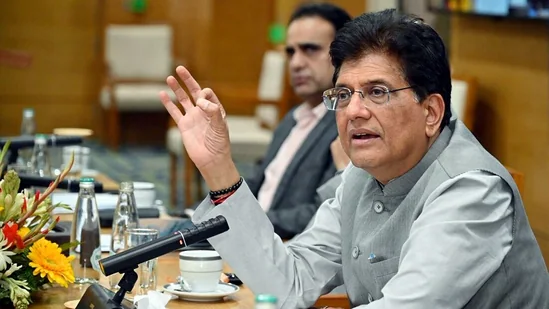India’s Economic Ascent: Record Exports and Expanding Free Trade Agreements
- MGMMTeam

- Jun 23
- 4 min read
India’s economic narrative is rapidly evolving, driven by unprecedented export achievements and an ambitious trade diplomacy agenda. Recently, Commerce and Industry Minister Piyush Goyal announced that India’s exports of goods and services touched an all-time high of US $825 billion in the fiscal year 2024–25. This milestone signals India’s growing integration with global markets and highlights the success of strategic reforms and international collaborations.
Export Growth Amid Global Challenges
The export sector in India has shown remarkable resilience, navigating global uncertainties and supply chain disruptions. In May 2025 alone, merchandise and services exports stood at US $71.12 billion, reflecting a year-on-year growth of 2.8%. The surge was notably driven by increased demand from major markets including the United States, China, Australia, Russia, and Germany. Service exports, especially in IT and financial services, contributed significantly to this growth, marking over 13% rise compared to previous periods.

This robust performance is the result of India’s diversified export basket and a focused effort to enhance quality, competitiveness, and global market reach. Government initiatives aimed at simplifying export procedures and providing exporters with digital tools have further supported this upward trajectory.
Vanijya Bhawan: The Symbol of Modern Trade Administration
A cornerstone in this journey is Vanijya Bhawan, the headquarters of the Ministry of Commerce and Industry, inaugurated in June 2022. Designed as a futuristic and digital-first hub, Vanijya Bhawan has revolutionized trade facilitation in India. With its transparent processes, enhanced stakeholder engagement, and state-of-the-art infrastructure, it has become a pivotal institution for coordinating trade policy, export promotion, and investor facilitation.
The Ministry credits this center for fostering an environment of efficiency and innovation, which has empowered small and medium enterprises (SMEs), exporters, and investors alike. The collaborative spirit cultivated within Vanijya Bhawan has helped India set new benchmarks in trade administration and delivery.
Strategic Expansion of Free Trade Agreements
Parallel to export growth, India is intensifying its engagement in Free Trade Agreements (FTAs) to unlock new markets and foster deeper economic ties. Recent progress includes the successful conclusion of a bilateral FTA with the United Kingdom. This pact is notable not only for reducing trade barriers but also for incorporating a social security agreement aimed at protecting Indian professionals working in the UK, an element India considered non-negotiable.
Negotiations are actively underway with key trading partners such as the European Union and the United States. With the EU, over 90% of market access issues have been resolved, while complex topics like carbon border adjustment mechanisms and regulatory standards remain under discussion. The goal is to finalize the EU-India FTA by the end of 2025. Similarly, talks with the United States are progressing, driven by mutual interest to avoid tariffs and foster greater investment and trade flows.
India has also revived or initiated talks with countries including Canada, New Zealand, Peru, and Chile, reflecting a strategic intent to expand its global trade footprint in a balanced and complementary manner. Minister Goyal has emphasized that India prioritizes trade partnerships with nations where synergies exist rather than direct competition, fostering cooperation in innovation and technology alongside traditional commerce.
Balancing Openness with Protection
While embracing greater openness, India remains cautious to protect its domestic industries, particularly in agriculture and sensitive sectors. Trade negotiations involve detailed consultations with farmers, manufacturers, and stakeholders to ensure that FTAs do not jeopardize local livelihoods. Tariffs on key products like dairy and certain agricultural goods continue to be maintained as safeguards.
Moreover, India is actively seeking better access for its steel exports in markets such as the US, EU, and UK, negotiating terms to overcome tariff and non-tariff barriers. The government is particularly attentive to issues surrounding sustainability, expressing concerns about the EU’s proposed carbon border taxes and advocating for fair and equitable treatment in line with India’s developmental status.
Growing Foreign Direct Investment and Global Confidence
The international investment landscape in India also reflects growing confidence. The country has expanded its sources of Foreign Direct Investment (FDI) to include 112 countries, a significant increase from 89 countries a decade ago. This broad-based investor interest is underpinned by reforms allowing 100% FDI in most sectors through an automatic route, further enhanced by streamlined regulations and government facilitation.
This inflow of investment complements India’s export ambitions, supporting infrastructure development, innovation, and manufacturing capabilities, thereby strengthening the nation’s position in global value chains.
Conclusion: Towards a Viksit Bharat
India’s simultaneous strides in export growth, trade diplomacy, and investment facilitation demonstrate a holistic approach to economic development. The visionary leadership within the Ministry of Commerce and Industry, anchored by institutions like Vanijya Bhawan, is driving systemic reforms that combine efficiency, inclusivity, and sustainability.
Minister Piyush Goyal’s declaration of India aiming for a Viksit Bharat (Developed India) by 2047 is more than an aspirational goal—it is a roadmap grounded in pragmatic policies, collaborative partnerships, and relentless execution. As India continues to chart this new course, it stands poised to become a pivotal player in the global economic landscape, delivering growth and prosperity for its people.
(Sources: Hindustan Times, Economic Times)




Comments